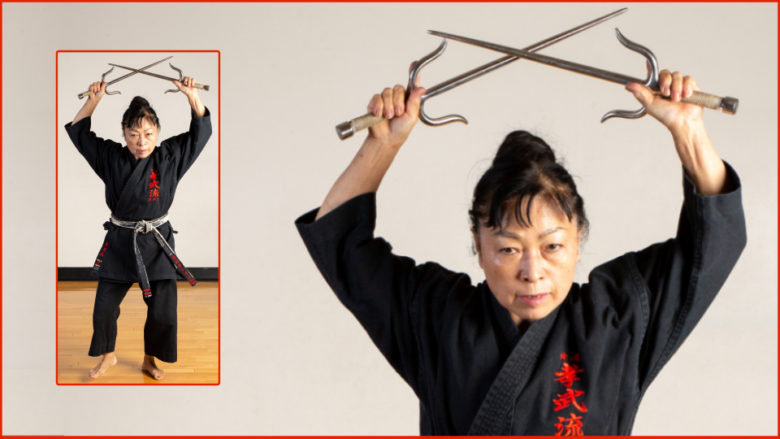An Okinawan Policeman’s Truncheon

釵
The sai was never a fishing or farming implement. Carried in pairs, they were a symbol of police authority. Since metal was not found on the island of Okinawa, it had to be imported and was very scarce. The sai, made of metal, made an impressive show of authority.
Not just a deterrent, sai could be used to effectively defend against a sword, deflecting a cut and forcing the sword aside so the defender could thrust with the second sai. Reversing the grip, the blunt end of the sai could be used to add power to a punch.
The kanji for sai is the same as the kanji for an ornamental hairpin. Does this mean that sai were once worn in the hair? Not at all, but sai are shaped similar to the hairpins once worn in a Japanese woman’s hair.
The Sai Kata
1. Nichō Zai 二丁釵
Nichō Zai remains very similar to its roots in Matayoshi kobudō. It is the first sai kata that beginning kobudō students learn. Because it uses just one arm at a time and because it has many repeating movements it is easy to learn. However, there are also grip changes and targeting changes to be mastered.
2. Kōbu no Sai 孝武の釵
Kōbu no Sai takes advantage of the longer reach and more devastating potential of a sai used in extended grip. There are no grip changes like you see in Nichō Zai. Once the sai is extended it remains extended, stabbing rather than punching. With the sai in extended grip the second sai can be used to add support to a block.

